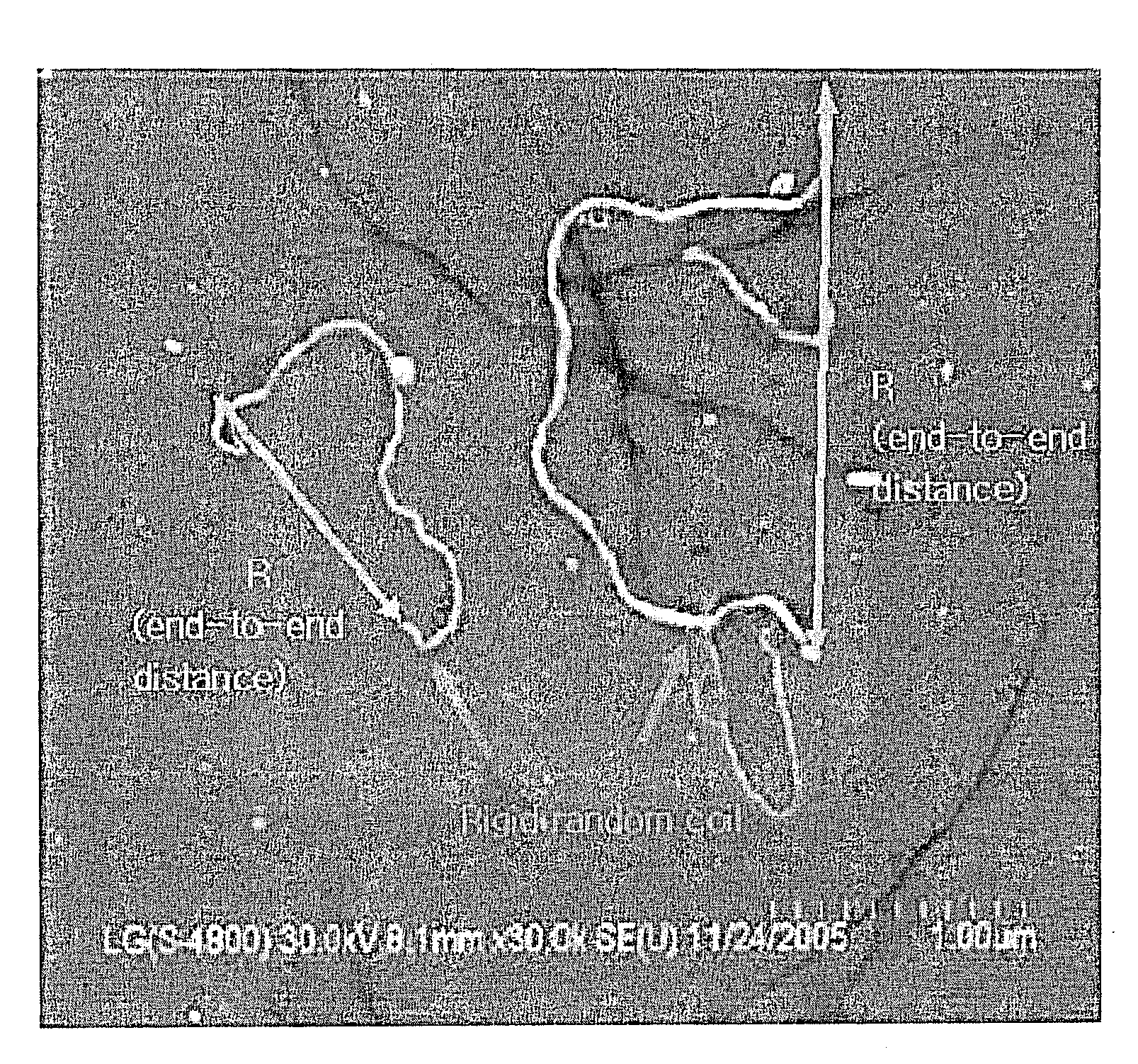Rigid random coils and composition comprising the same
a random coil and coil technology, applied in the field of random coils, can solve the problems of large change in strength of the random coil, unresearched research on the subject, and the rigid rod cannot be used effectively, so as to achieve the effect of reducing problems and efficiently applying
- Summary
- Abstract
- Description
- Claims
- Application Information
AI Technical Summary
Benefits of technology
Problems solved by technology
Method used
Image
Examples
example 1
Preparation of Rigid Random Coils and Thin Film
[0064]5 g of a multi-walled carbon nanotube aggregate (available from JEIO Co., Ltd.), obtained by supporting a metal (Fe) catalyst on ceramic powder (aluminum oxide) and then performing chemical vapor deposition, was added to 100 g of purified water, and then sonication was conducted at 40 W for 180 min. 50 g of 60% strong nitric acid was added thereto, and then sonication was performed at 40 W for 60 min, so that the aggregate was cut and separated and the ceramic powder was dissolved. Subsequently, the product was washed with purified water, added to 100 g of dimethylformamide, and then subjected to sonication at 40 W for 180 min. The sonicated solution was centrifuged, thus obtaining rigid random coils in the uniform solution, the bending ratio and the weight average molecular weight of which were measured to be 0.32 and 3.43×108 g / mole, respectively. The rigid random coils thus prepared were filtered, resulting in a thin film, the ...
example 2
[0065]A uniform solution of dimethylformamide and rigid random coils, obtained as in Example 1, was mixed with polycarbonate dissolved in THF so that the rigid random coils were contained in an amount of 0.5 wt %, followed by film casting. The rigid random coils thus prepared were filtered to thus obtain a thin film 1 μm thick, the surface resistance of which was measured to be 104˜8 Ohm / sq.
example 3
Carbon Fiber Rigid Random Coils
[0066]The present example was conducted in the same manner as in Example 1, with the exception that carbon fiber, rather than carbon nanotube, was used. Thus, the resultant rigid random coils had a contour length 20 times the diameter thereof, and a bending ratio of 0.4, corresponding to the properties of rigid random coils. The shape of the rigid random coils was not limited only to the tube as in Example 1.
PUM
| Property | Measurement | Unit |
|---|---|---|
| wt % | aaaaa | aaaaa |
| diameter | aaaaa | aaaaa |
| outer diameter | aaaaa | aaaaa |
Abstract
Description
Claims
Application Information
 Login to View More
Login to View More - R&D
- Intellectual Property
- Life Sciences
- Materials
- Tech Scout
- Unparalleled Data Quality
- Higher Quality Content
- 60% Fewer Hallucinations
Browse by: Latest US Patents, China's latest patents, Technical Efficacy Thesaurus, Application Domain, Technology Topic, Popular Technical Reports.
© 2025 PatSnap. All rights reserved.Legal|Privacy policy|Modern Slavery Act Transparency Statement|Sitemap|About US| Contact US: help@patsnap.com



